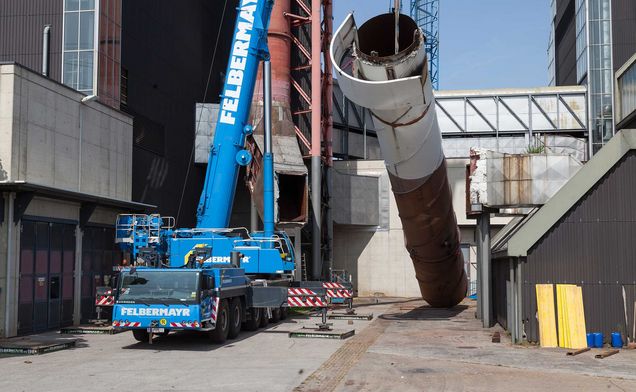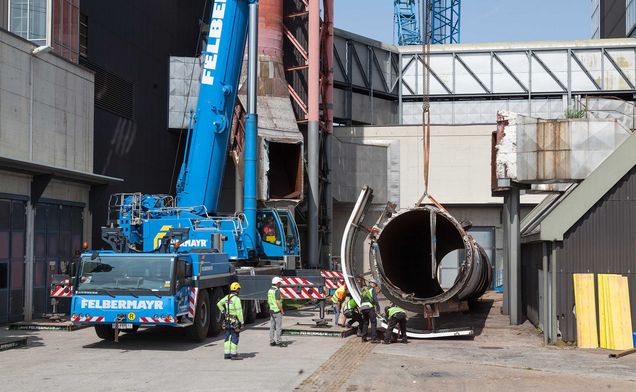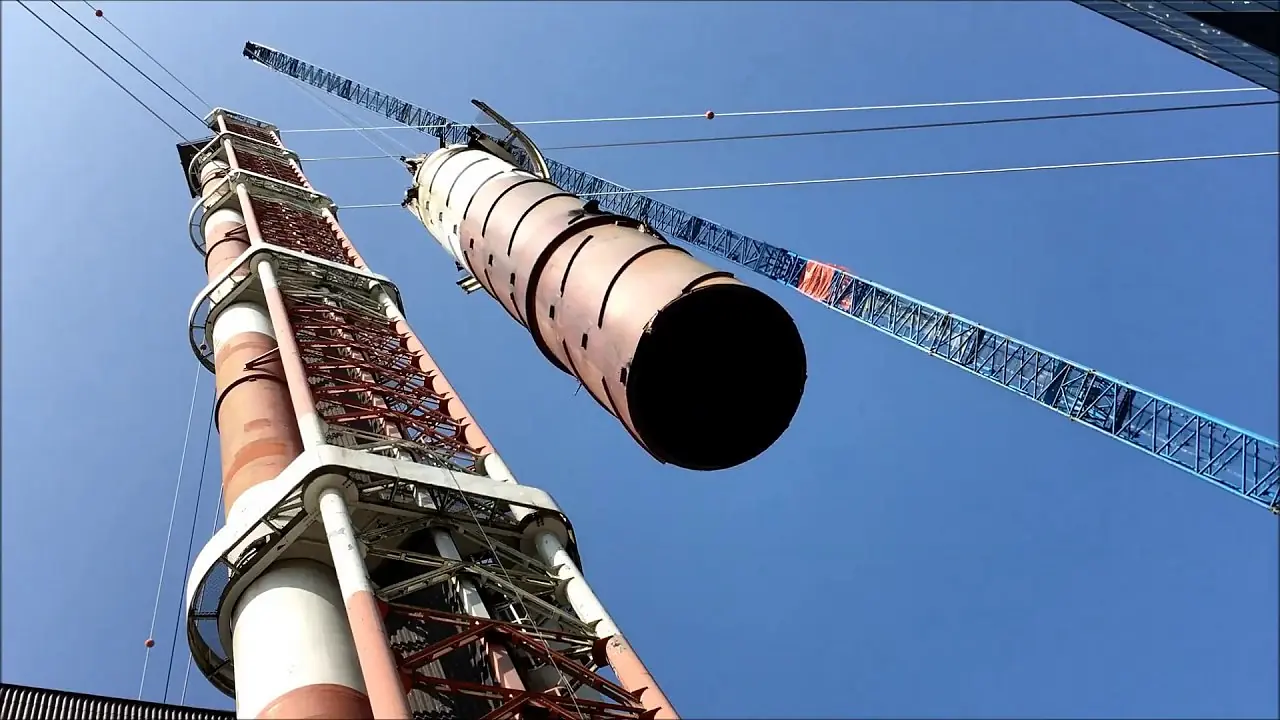189-metre boom for chimney demolition job
August 22, 2017 | Markus Lackner
Towering 175 metres above the ground, the chimney of the Werndorf district heating power station south of Graz, had been Styria’s tallest building for about 50 years. The demolition work for the striking fireplace began in mid-August. With its removal, the history of a formative building in the south of Styria's capital city comes to an end and a caterpillar crane with technical highlights is used.
An operating weight of 749 tonnes
“51 lorry transports were necessary in order to bring the crane to the place of operation,” says Michael Lehner from the Felbermayr Project Department in Wels. This was mainly due to the total boom length of 189 metres. “The last time we used a crane in this configuration was in 2008 for the construction of a gas conversion station in Spain,” Lehner recalls. Together with 665 tonnes of ballast, the crane has an operating weight of 749 tonnes. And so the engineers had to solve the first problem. The only possible location for the crane did not meet the static requirements, and a gas pipe ran underneath the crane.
Last but not least, however, these problems could be overcome with corresponding soil improvement measures and a two-week delay.
A hook height of 187 metres
In order to bring the first larger chimney segment to the ground, the fitters had to raise the work basket countless times in order to separate welding and screw connections. The first big lifting job which was preceded by several small lifting jobs for removing ladders and railings made things truly exciting. The aim was to safely bring the top chimney segment with a height of about 20 metres and a calculated weight of 16 tonnes to the ground. Thanks to correct weight specifications and almost windless conditions, the crane lifting job was a success and the pipe safely reached the ground after about half an hour. Arriving there, the upper end was connected to a mobile crane with a maximum load capacity of 350 tonnes and moved horizontally so that it came to rest on the ground. Afterwards it was cut into pieces with cutting torches and removed. The other chimney segments were removed in a similar way.
The demolition of the first chimney segment, however, already ended the tower’s reign as the tallest building in Styria. The chimney of the neighbouring gas and steam power plant in Mellach, which was built in 2012, is also 175 metres tall. It thus reigns supreme in Styria, followed by the Dobl transmission mast (140 metres) and RHI’s chimney in Trieben (140 metres).














